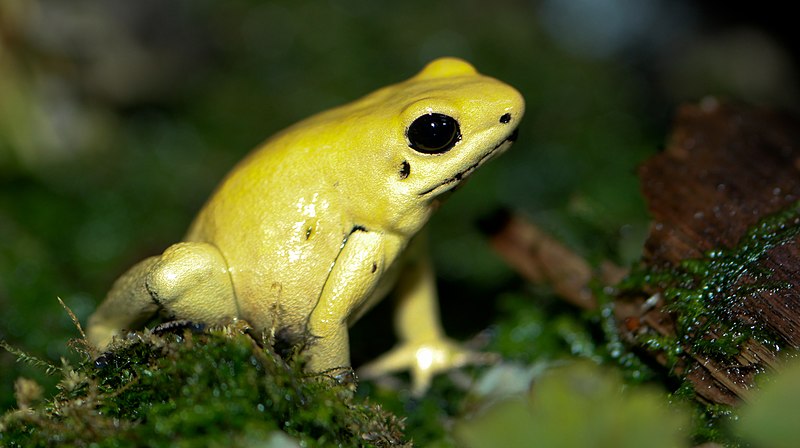
Deep within the lush rainforests of the Colombian Pacific region resides a creature both captivating and deadly: Phyllobates terribilis, also known as the Golden Poison Frog. Renowned as the most toxic frog in the world, this elusive amphibian has fascinated scientists and enthusiasts alike.
Phyllobates terribilis stands out among its amphibian counterparts with its striking golden or yellow coloration, accented by black spots or bands. Its radiant appearance serves as a warning to potential predators, signaling its toxicity and dangerous nature. The bold and vibrant patterns of this frog make it a visually captivating species, attracting attention from researchers and nature lovers.
Toxicity Beyond Measure
Phyllobates terribilis is renowned for its potent toxins, which are among the most powerful naturally occurring poisons in the animal kingdom. The skin of this frog contains a complex cocktail of alkaloid compounds, primarily batrachotoxins, that can paralyze or even kill predators. It is estimated that a single frog can produce enough toxin to kill 10 adult humans, making it a formidable presence in the rainforest ecosystem.
The toxicity of Phyllobates terribilis is believed to be an evolutionary response to its environment. The frog acquires its toxins through its diet, primarily consuming small invertebrates like ants and beetles that contain alkaloid-rich compounds. Over time, the frog’s body stores these toxins, effectively turning it into a lethal weapon of defense. The extraordinary toxicity of Phyllobates terribilis is a testament to nature’s incredible adaptations.
Scientific Research
Phyllobates terribilis has been a subject of extensive scientific research due to its toxic nature. Scientists study the frog’s chemical defenses to gain insights into the mechanisms of toxicity and potential applications in fields such as medicine and pharmacology. Research also focuses on understanding the frog’s behavior, reproductive biology, and population dynamics to inform conservation strategies.
Despite its lethal nature, Phyllobates terribilis plays a crucial role in the rainforest ecosystem. Its toxic secretions serve as a natural defense mechanism, keeping predators at bay and contributing to the overall balance of the ecosystem. By controlling populations of potential predators, the frog indirectly influences the abundance and distribution of other species in the rainforest.
The Golden Poison Frog, stands as a testament to nature’s awe-inspiring adaptations and the delicate intricacies of the rainforest ecosystem. Its vibrant appearance and deadly toxins have captivated the curiosity of scientists and nature enthusiasts around the world. As we marvel at its beauty and lethal capabilities, let us also recognize the importance of preserving its habitat and the rich biodiversity that thrives in the Colombian Pacific rainforests.
See all the latest news from Colombia and the world at ColombiaOne.com. Contact our newsroom to report an update or send your story, photos and videos. Follow Colombia One on Google News, Facebook, Instagram, TikTok and subscribe here to our newsletter.


